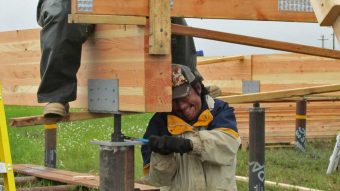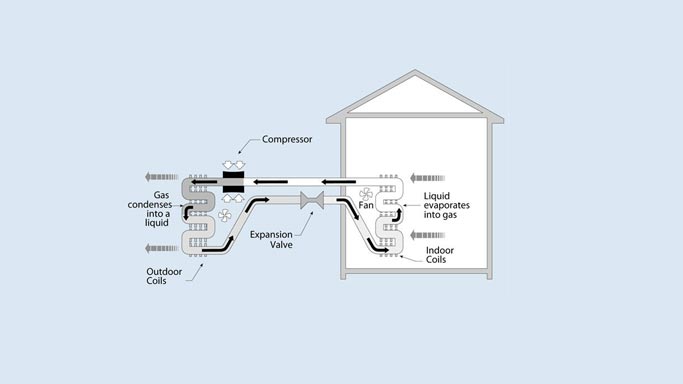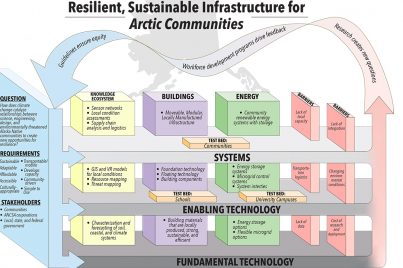Air source heat pumps (ASHPs) are heating appliances that act like a refrigerator in reverse. Whereas a refrigerator removes heated air from the interior and transfers it to the room, an air source heat pump extracts heat from the air outside a house and transfers it inside. While the air in Alaska is cold, it still contains heat. An ASHP takes that heat and uses electricity to “step it up” to a temperature warm enough for space heating. Until recently, ASHPs have been used in areas that experienced mild winters, but more recent models can work in colder climates.
Southeast Alaska is a good candidate for air source heat pumps because of its milder climate and access to affordable hydroelectric power. Because heat pumps use less electricity than electric resistance heating appliances, they could reduce heating costs for some homeowners. However, there is still uncertainty about the performance of ASHPs in cold climates–including how they stay defrosted on the coldest days of the year. In more northern areas of Alaska, researchers are assessing the economic and climatic conditions where it may make sense to install an ASHP.
CCHRC has conducted several studies on air source heat pumps in Alaska.
Technology Assessment: A technology assessment was conducted in Southeast Alaska 2013, which can be viewed below, followed by efficiency tests and a consumer survey in 2014 and 2015.
Air Source Heat Pumps for Residential Baseboard Heating: CCHRC worked with Southeast utilities to identify ASHPs that work for homes with baseboard distribution systems. Air‐to‐water heat pump systems currently on the market are best suited for in‐floor hydronic heating applications, as they supply hot water at approximately 90–110 degrees F. However, many homes in Alaska use baseboard hydronic heat, which require substantially higher supply water temperatures (approximately 160 to 180 degrees F). New ASHP designs using R744 (CO2 refrigerant) could satisfy these demands. For homes with baseboard heating, two primary options include:
- Identify a heat pump that is capable of high‐temperature operation, or
- Retrofit the heat delivery system to radiators that can operate with conventional air‐to-water heat pumps.
Air Source Heat Pumps with Combined Heating & Ventilation (BrHEAThe): Researchers studied how to integrate an ASHP into a combined heating and ventilation system that is used in high-efficiency homes in Alaska. This built on the original BrHEAThe System, which uses an HRV to deliver heat from an oil-fired boiler to ensure homes receive adequate fresh air. CanmetENERGY-Ottawa funded this research.
Air Source Heat Pump Calculator: CCHRC researchers helped develop the Alaska Mini-split Heat Pump Calculator so users can estimate the performance and financial return of installing a mini-split heat pump in their home. It includes community-specific climate, fuel cost, and electric utility rate information.
One part of the Secure and Resilient Power Generation in Cold Regions project is to identify potential heating and cooling technologies for buildings on Ft. Wainwright and at the Permafrost Tunnel site in Fairbanks. As part of this effort, CCHRC will test the efficiency of several models of ASHPs commonly installed in Alaska using a cold chamber at CCHRC’s Research and Testing Facility. The results will be used to inform the U.S. Army and others on whether ASHPs would be appropriate for Ft. Wainwright.











